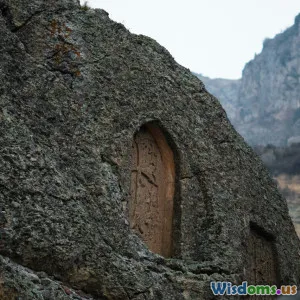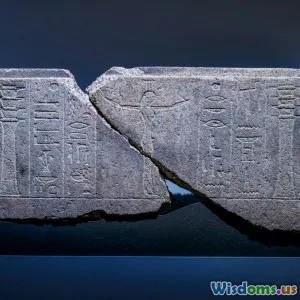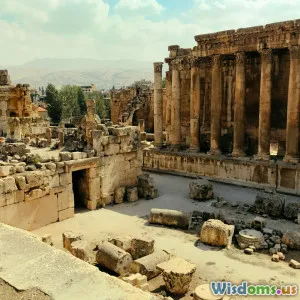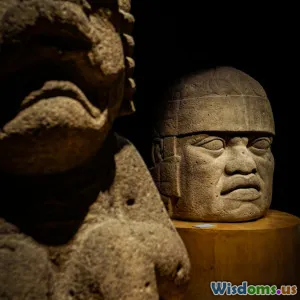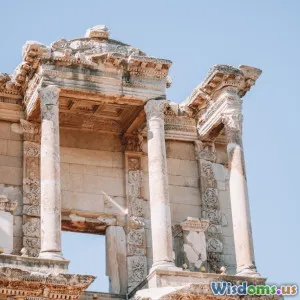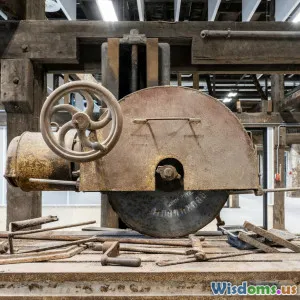
Ten Surprising Facts About Göbekli Tepe That Defy Mainstream History
9 min read Discover ten astonishing facts about Göbekli Tepe that challenge conventional historical views. (0 Reviews)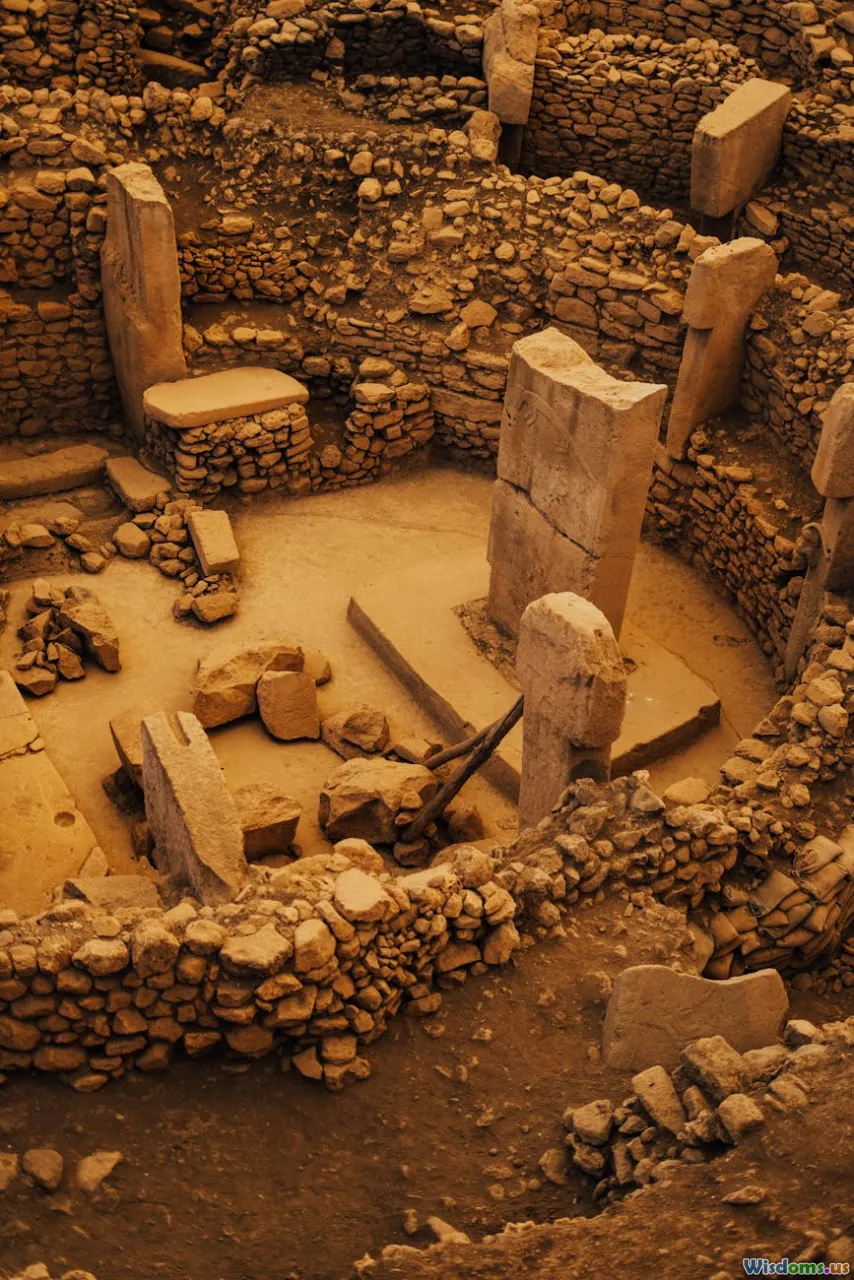
Ten Surprising Facts About Göbekli Tepe That Defy Mainstream History
Göbekli Tepe, perched on a hilltop in southeastern Turkey, has revolutionized our understanding of prehistoric human civilization. Thought to be the world's oldest known megalithic site, it challenges the conventional timeline of human development and hints at a much earlier inception of complex societies than previously believed. As archaeologists meticulously uncover its layers, Göbekli Tepe continues to unfold mysteries that defy mainstream historical narratives. Let’s delve into ten surprising facts about this enigmatic archaeological treasure.
1. Göbekli Tepe Is Over 11,000 Years Old — Older Than Stonehenge and the Pyramids
One of the most astounding revelations about Göbekli Tepe is its age. Radiocarbon dating places its origins around 9600 BCE, approximately 6,000 years before Stonehenge and over 7,000 years before the Great Pyramid of Giza. This predates the advent of agriculture and settled communities, raising questions about how nomadic hunter-gatherers could erect such complex monumental structures.
This dating challenges the narrative that organized religion and monumental architecture only flourished with agricultural surplus and sedentary lifestyles. Göbekli Tepe suggests that spirituality and social complexity might have driven the transition towards agriculture rather than the other way around.
2. **The Site is Entirely Pre-Pottery Neolithic — No Evidence of Agriculture
Göbekli Tepe was built by a society that had not yet developed pottery or farming, a fact confirmed by the absence of domesticated plants or animals directly linked to the site. Archaeological layers show no evidence of conventional agriculture at the time these structures were built.
This contradicts the longstanding theory that monumental architecture arises only after agricultural societies form. The builders were presumably hunter-gatherers, which implies a level of social organization and cooperative effort far beyond previous assumptions.
3. Megalithic Pillars Weighing Up to 20 Tons Were Intentionally Arranged
The site features massive T-shaped limestone pillars, some reaching nearly 5.5 meters in height and weighing up to 20 tons. These pillars were meticulously quarried, carved, transported, and arranged in circular enclosures without the aid of metal tools or the wheel.
The precision and scale of these constructions reveal advanced engineering skills, including the use of levers, ropes, and community labor, casting doubt on simplistic views of prehistoric technological capabilities.
4. Intricate Animal Carvings Convey Rich Symbolism
Decorations on the pillars include highly detailed reliefs of a diverse array of animals: snakes, boars, foxes, cranes, lions, scorpions, and vultures, among others. These images are far from random — they likely held profound symbolic, religious, or mythological significance.
Some researchers propose that the carvings represented celestial constellations or encoded ancient myths and calendars. For instance, Anthony Peratt, a plasma physicist, interpreted some figures as depictions of ancient star maps, suggesting that Göbekli Tepe may have had an astronomical function.
5. The Site Was Purposefully Buried 8,000 Years Ago: A Sustainable Archaeological Enigma
Göbekli Tepe was deliberately buried around 8000 BCE for reasons still unknown. Unlike ruins that crumble through neglect, this purposeful concealment preserved it in near-perfect condition for millennia.
One theory posits that once the site’s ritual life ended, it was ritually decommissioned and buried to protect its sacred nature. This practice illuminates complex societal norms and belief systems previously unconsidered for this epoch.
6. No Seemingly Permanent Habitations Have Been Found on Site
Surprisingly, Göbekli Tepe lacks evidence of settlements or permanent habitation nearby. The absence of domestic structures, hearths, or food storage pits contrasts with its monumental nature.
This suggests that Göbekli Tepe served a specialized communal or religious purpose rather than being a residential area. It may have functioned as a pilgrimage site or a meeting place for dispersed bands of hunter-gatherers.
7. Göbekli Tepe Predates Known Written Language Systems
While the site is not inscribed with written language, the symbolic complexity of its carvings may represent the precursors to writing systems. This implies abstract thought and symbolic communication existed far earlier than once believed.
As known writing systems emerged much later (circa 3200 BCE in Mesopotamia), Göbekli Tepe’s carved reliefs provide a window into proto-symbolic communication vital to cultural identity.
8. The Site’s Discovery Completely Altered Theories About the Neolithic Revolution
Prior to its unearthing in the 1990s, many scholars believed farming and permanent settlements sparked civilization. Göbekli Tepe calls this into question by placing religious or ritual hubs before agriculture.
Archaeologist Klaus Schmidt, who led excavations before his death in 2014, argued that the hunger for social and spiritual cohesion might have incited humans to start farming to support large-scale ritual gatherings.
9. Possible Evidence of Early Social Stratification
The sheer scale, organization, and craftsmanship involved in the construction imply effective leadership and social hierarchy. Modern ethnographic analogies suggest complex cooperation couldn’t happen without some division of labor or status differences.
For example, the allocation of labor to quarrying, carving, and construction points to coordinated efforts probably directed by a form of hierarchical social structure, challenging the idea that egalitarian hunter-gatherer societies were standard during this era.
10. Göbekli Tepe Remains One of the Greatest Archaeological Mysteries
Despite decades of research, fundamental questions about Göbekli Tepe endure: Who built it? Why? How was such monumental effort organized by ostensibly nomadic groups? What exactly did the symbolic motifs mean?
Its enigmatic nature inspires continuing debate and insight, dramatically reshaping how we understand prehistoric human culture and capabilities.
Conclusion
Göbekli Tepe’s astonishing revelations thrust humanity’s distant past into a new light. Its existence upends traditional timelines that attribute complex social and religious development to the advent of farming. Here, monumental architecture, symbolism, and social cooperation flourished among hunter-gatherers in the tenth millennium BCE.
This site reminds us that history is seldom linear and that human creativity and spirituality are ancient and deeply rooted traits.
Exploring Göbekli Tepe encourages us to question long-held assumptions, opening doors to fresh understanding about the dawn of civilization. As excavations continue and technology advances, we may uncover even more surprises about this extraordinary archaeological wonder.
Whether viewed as a sacred sanctuary, an early observatory, or an archetype of human aspiration, Göbekli Tepe stands as a beacon of mystery that defies mainstream history and calls us to reevaluate our origins.
By embracing the marvels of Göbekli Tepe, we gain a profound appreciation of humanity's ingenuity, reminding us that our predecessors were far more sophisticated and visionary than once imagined.
Rate the Post
User Reviews
Popular Posts










